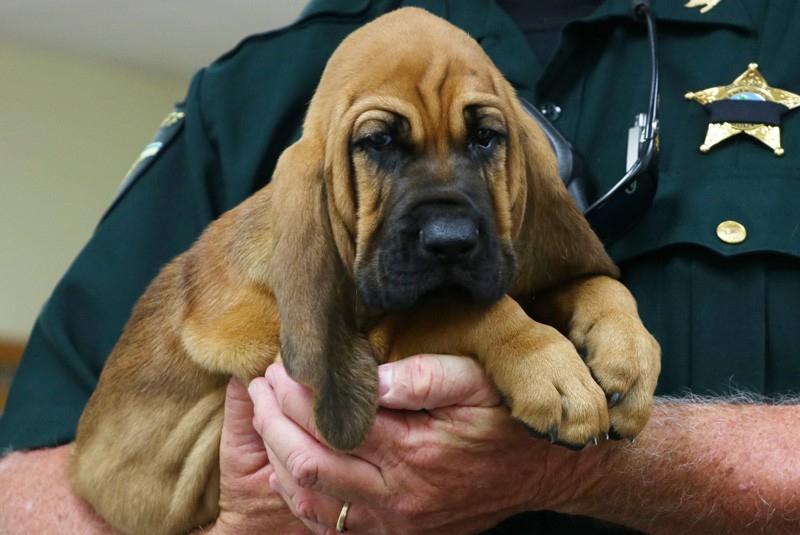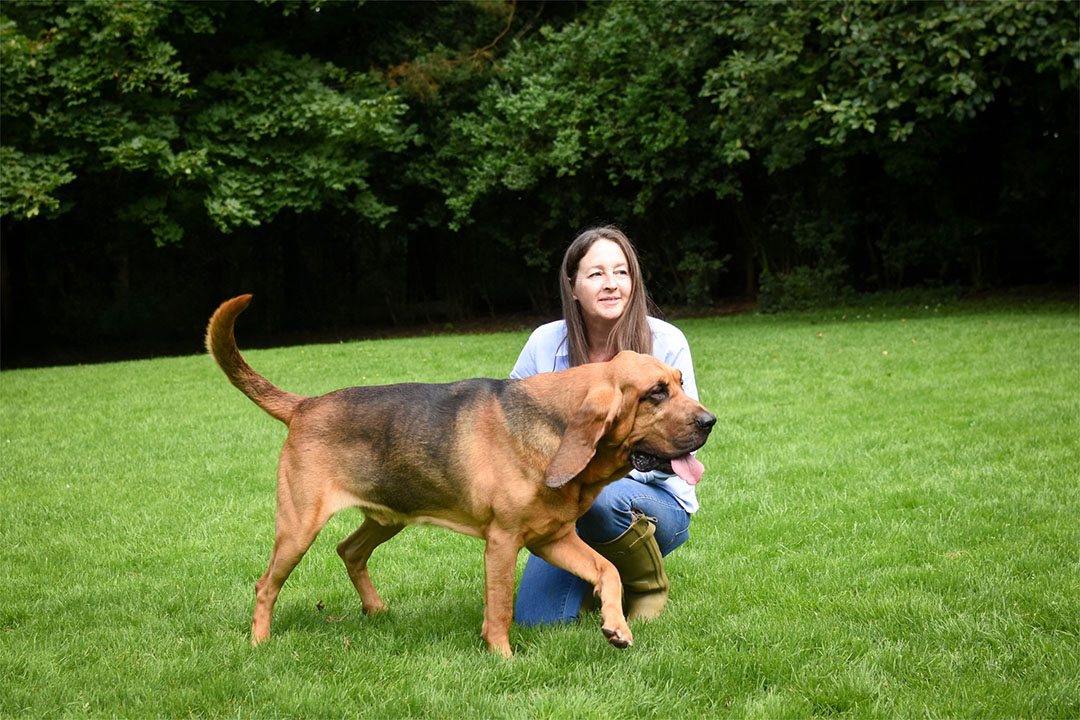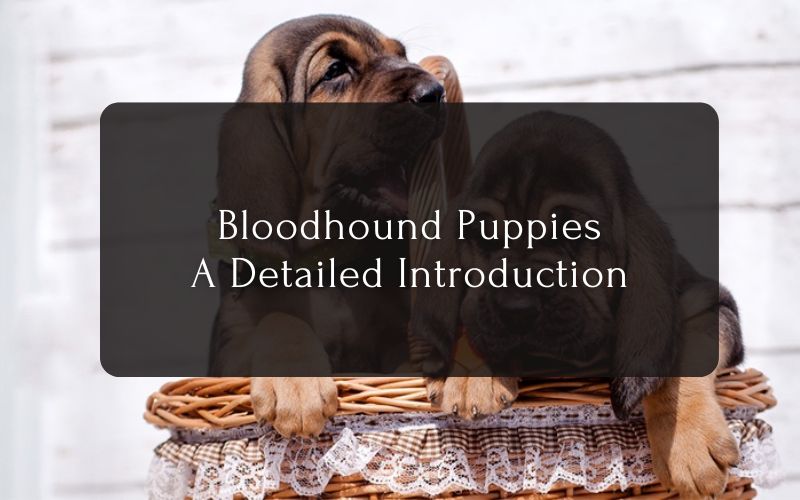The number of people raising pets, especially bloodhound puppies, has been increasing over the past few years. Despite this breed’s long-time history, many people still have few clues about what they are like and what they should keep in mind when raising these little friends.
If you have the same questions as them, keep reading this article!
What are bloodhound puppies?
It is safe to say that bloodhounds are a kind of Belgian dog. That is because they are believed to originate from hounds in the Abbey of Saint-Hubert (Belgium) back in the Medieval Ages with the name le Chien de Saint-Hubert.
Back then, they were mostly bred to hunt wild animals and track people, thanks to their capacity to discern human scent from further distances.

Through many centuries, the sense of smell and tracking instinct is still their outstanding feature of them. The hounds, then, become the most sensitive and clever pets for people and the ideal hunters for police, detectives, and law enforcement to track missing people, pets, or prisoners worldwide.
What are the remarkable features of bloodhound puppies?
One of the most obvious characteristics of the hounds, which makes them different from other dogs, is their appearance. While the long-haired dalmatian is famous for its hair and black dots, the bloodhounds are well-known for their large size, typical face, and coat body colors.
The dogs can actually stand 23 to 27 inches tall and have a weight of up to 160 pounds. Because of an uncommonly large skeletal structure, which means their weight is concentrated in their bones, they are pretty thick in length.
Their coat has only fur and no more hair on it. The overall colors can vary from black and tan, tan and liver, or red. The bloodhounds’ most outstanding features must be the long, wrinkled face with large drooping ears, loose skin, and deep-set of eyes.
The facial expression of the dogs might make them look aggressive and fierce, but they are actually easygoing and enjoy company, including people and other pets.
How to take proper care of bloodhound puppies?
The growing puppies can put on 3 to 5 pounds a week, and the 4 to 8-month stage is when the growth occurs rapidly. In that stage, you need to pay more attention to the bones of the puppies as they grow. Food with calcium-rich ingredients should be recommended at this time.

In terms of food and nutrition, the amount of food a puppy needs increases as he/she grows. Typically, a puppy needs about 8-12 cups of dry food a day during their development period. For a small pet from 8 to 16 weeks, you should feed 3-4 meals a day.
From about 12/16 weeks to 6 months, you should feed three meals a day; from 6 months to the rest of their lifetime, two meals a day is appropriate.
Taking care of the bloodhounds is so much like the sable german shepherd; what you should definitely avoid is a large meal per day for your pets as it may cause Bloat or gastric dilatation-volvulus.
How do the bloodhound puppies exercise?
Generally, a bloodhound grows significantly in the first two to three years, and exercise is more important to them in this stage than other stages in their life.
Exercising is undoubtedly essential to puppies early on, but we would not suggest overdoing it, especially on hard surfaces.
Walking on the grassy and barked/ muscled trails would be more appropriate. A peaceful walk in the park with your pets in the afternoon is also a good idea.
If you want to prevent your little puppies from sitting for a long time, let’s go outside and let them play with other dogs. It is a healthy exercise, playing naturally with their fellows.
There is only one little note in this case, though. It would be best if you kept an eye on your puppies while they play with other dogs/toddlers to prevent hurt. Like the black golden retriever, the bloodhounds will play passionately, and you must ensure they do that just about enough.
One more small yet important thing about bloodhound puppies is that if you allow or do not allow them to do it within four months, they will/will not do it later in life. You probably should keep this information in mind for better pet training.
Although they are easygoing greed, there are some details about them you really should keep in mind for better pet care.
Related post: Best Dog Collar For Pulling – Top 10 That Keep Your Walks Struggle

What are the pros and cons of raising a bloodhound?
Raising a bloodhound puppy or Goldendoodle puppy and other pets actually gives us several advantages. It gives us the feeling of affection and temperament. We all love caring for other creatures with all our passion and heart, and a pet is one of them.
The bloodhounds have a great sense of smell and an instinct for tracking, which helps find lost stuff and people (for example, toddlers). Moreover, they are good-natured and enjoy company, so having them as companies is joyful and makes us feel we are not alone.
Raising a bloodhound, however, does have disadvantages, too. The dogs are large, love-tracking, and stubborn, so they might be hard to handle with the elderly and young kids. Secondly, it takes time to train the dogs to obey the training as they are willful and strong.
Another disadvantage you might need to know is that they bark and drool a lot, making you feel noisy, and making it hard to keep the house spotless.
In Conclusion
Bloodhound puppies are close friends to people, both kids and adults. It might take time and patience to take care of them, but the feeling of having them as a company is totally worth it!
If you want to own a bloodhound, no matter what disadvantages he/she might cause, we hope your experience is awesome and joyful.


